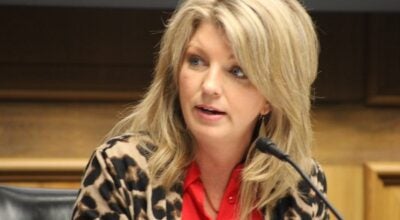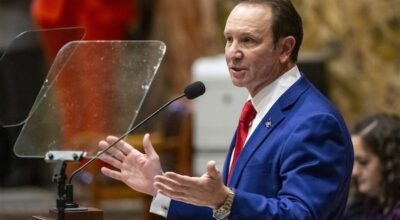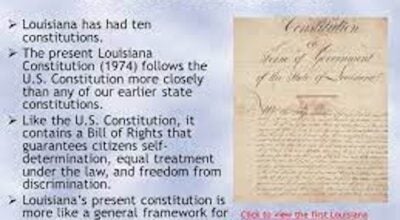Where were you when Camelot fell 50 years ago
Published 5:24 am Friday, November 22, 2013
On the day of President John F. Kennedy’s assassination, the Rev. Aubrey Guilbeau was an eighth-grade student in Jennings, and his science class had just completed a project constructing a wireless crystal radio.
“We were using scrap materials and the speaker from an old radio,” said Guilbeau, of Immaculate Conception Catholic Church in Sulphur. The class was prepared to test the radio, and they were all excited to see if it worked, he said.
“One student began turning the tuner. At first we heard only static noise, then finally the voice of a man came through the speaker. We recognized the voice as that of an announcer on our local AM radio station,” Guilbeau said. “We were all so excited that we started applauding and cheering.”
As their jubilation subsided, they began to notice the announcer seemed upset and his voice quivered with sadness. They quickly quieted down to listen to what he was saying. Then they heard the news, “President Kennedy has been shot.”
“We were all in shock — not believing what we were hearing. Some began to cry, and confusion began to spread through the room,” he said. “Then the voice of our school principal was heard over the school intercom system confirming what we had just heard on the radio.”
The principal told them school had been canceled for the rest of the day.
“We were all filled with fear as we wondered what did all of this mean and what would happen next,” he said. “We soon left school.”
Everyone returned to their homes as families gathered around radios and televisions to follow the tragic news story.
Retired Lt. Col. Gilbert Fontenot of Moss Bluff was on active duty in Germany when he heard the news.
“A military friend and I were just returning from a military two-week course. We were listening to the radio and heard the news,” Fontenot said. “We were in shock. When we went inside my friend’s house, both his wife and my wife said our faces looked like we had seen a ghost. We told them the news. They couldn’t believe it.”
At the time of the shooting, former American Press Executive Editor Jim Beam had been a staff reporter for two years. He and his wife, Jo Ann, were shopping that fateful Friday. His wife heard about the shooting on the car radio while Beam was picking up a watch at a repair shop. Although in shock, Beam said they made their way downtown to Sears.
“By the time we got to Sears the word was out that Kennedy had died,” Beam said. “One of the clerks at the story said something like ‘Well, they got Jack Kennedy. If they can just get his brother we’ll be OK,’ which was very disturbing to us.”
The clerk was referring to then-Attorney General Robert Kennedy — who was not very popular in the South because of his stances on civil rights, Beam said.
Beam was a big supporter of Kennedy and even campaigned for him — something Beam said he rarely did for a politician.
“I really believed in what he was saying,” he said. “We identified with Kennedy because he brought new ideas to the table. He was well-liked all around the world, and his wife was his biggest asset.”
Beam said Kennedy knew how to relate to people.
“His news conferences were the most entertaining news conferences I’ve ever heard,” he said. “He had a way of poking fun at himself and picking on the media.”
Beam recalled the four days over the weekend leading up to Kennedy’s funeral as the “darkest days” in his life.
“Your hopes are high and you’re feeling good about the country and ‘bam,’ someone killed him,” he said.
Conspiracies have swirled around the president’s death for decades. The Warren Report, which many people take issue with, supported the theory of the lone gunman.
Bud Andry of Lake Charles remembers Lee Harvey Oswald — the man charged with Kennedy’s assassination. His late mother, Lena Garner, was Oswald’s landlady when he lived at 4907 Magazine St. in New Orleans in 1963 before moving to Dallas later that year. After Andry married and moved to Lake Charles, he would go back to New Orleans to visit his mother.
One weekend Andry brought his in-laws to New Orleans. While they were there, Oswald came into the backyard, which all the tenants shared. He was carrying a snapping turtle he found on Airline Highway. Oswald said he wanted to eat him if he knew how to clean him. Andry’s father-in-law helped him clean the turtle. In the meantime, his wife, Marina Oswald, who was pregnant, came outside. He said they spoke very little English.
Andry remembers Oswald had anti-American government posters that read “Viva (long live) Castro.”
“They would have trouble with him pinning Castro signs on the screen door,” Andry said. “And one day, he moved out.”
Oswald moved to Dallas without paying two months’ rent.
When Oswald’s photo was on shown on TV after the assassination, Andry’s father-in-law said, “Hey, that’s the man I cleaned that turtle for.”
Andry said he did not get personal with Oswald.
“One-on-one, he was a recluse. He wasn’t very talkative,” he said. “He had an agenda and whether or not he killed him I don’t know.”
A year after meeting Oswald, Andry was sitting at his kitchen table when his daughter turned up the TV and said, “Daddy, Mawmaw Lena is on television.”
“I really didn’t pay much attention,” he said. “She turned the TV up loud, and I could hear my mother’s voice.”
After the assassination, she was contacted by NBC and was being interviewed about Oswald.
Andry’s mother would go on to be a part of the investigation into Kennedy’s death. The FBI would show her photos of men as they were trying to determine if others were involved in the assassination.
While there will always be speculation about why Kennedy was killed or whether others might have been involved, one thing is certain: Nov. 22, 1963, will be a day in history that changed the shape of America forever.
In this Nov. 22





